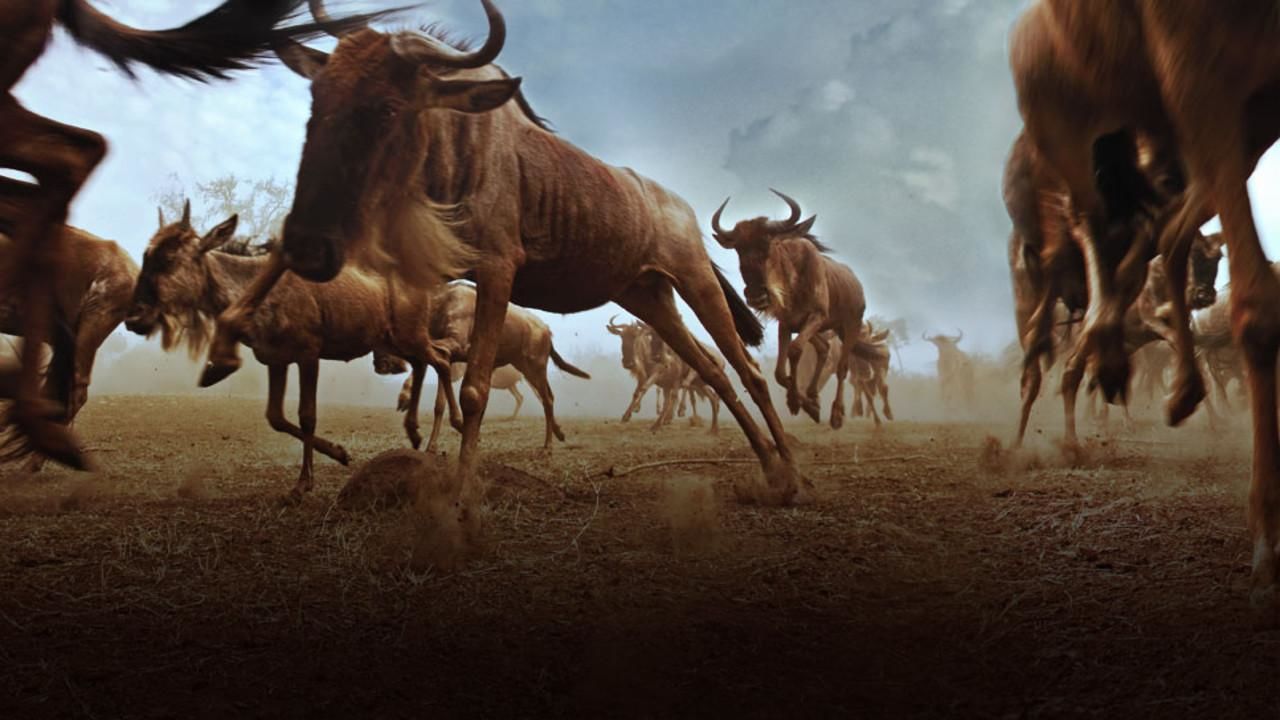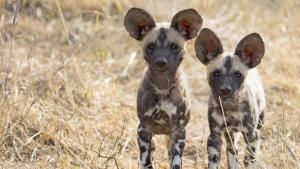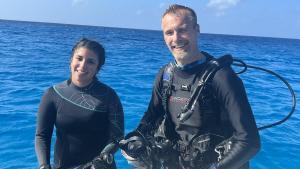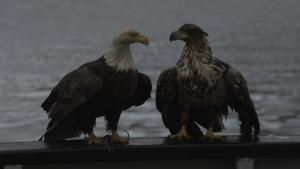- Middle East - English
Americas
Asia & Oceania
Middle East & Africa
Europe
SHOWS
SHOWS BY SUBJECT
DON'T MISS
 Chasing UFOsAlien Cowboys
friday 19 april 2024 at 7:00pm
Chasing UFOsAlien Cowboys
friday 19 april 2024 at 7:00pm
 Extraordinary Birder With Christian CooperExtraordinary Birder with Christian Cooper: Palm Springs
friday 19 april 2024 at 8:00pm
Extraordinary Birder With Christian CooperExtraordinary Birder with Christian Cooper: Palm Springs
friday 19 april 2024 at 8:00pm
 Ice Road Rescue All-Nighter
friday 19 april 2024 at 9:00pm
Ice Road Rescue All-Nighter
friday 19 april 2024 at 9:00pm
 Chasing UFOsGame Of Drones
friday 19 april 2024 at 10:00pm
Chasing UFOsGame Of Drones
friday 19 april 2024 at 10:00pm
 PhotographerDan Winters: Life is Once. Forever
saturday 20 april 2024 at 7:00pm
PhotographerDan Winters: Life is Once. Forever
saturday 20 april 2024 at 7:00pm
TOP SHOWS
VIDEOS
Don't Miss
Most Viewed
Fight Science
Show: Fight ScienceSecrets of the Octopus
Show: Secrets of the OctopusEurope from Above
Show: Europe from AboveGenius - Scientist
Show: GeniusThe Hot Zone
Show: The Hot ZoneNaked Science
Show: Naked ScienceSavage Kingdom
Show: Savage KingdomHard Time: Locked Up
Show: Hard Time: Locked UpHuman Weapons
Show: Fight Science
PHOTOS
Photo of the day
![Tim Shaw peels the foam roof off... [Photo of the day - 19 APRIL 2024]](https://assets-natgeotv.fnghub.com/POD/15170.ThumbL.jpg)
![Two crew members film Dr. Pol, Ben... [Photo of the day - 18 APRIL 2024]](https://assets-natgeotv.fnghub.com/POD/15168.ThumbL.jpg)
![The Notre Dame Cathedral. This is... [Photo of the day - 17 APRIL 2024]](https://assets-natgeotv.fnghub.com/POD/15226.ThumbL.jpg)
Most Viewed
SharkFest
Show: SharkFestDrain The Oceans
Show: Drain The OceansAir Crash Investigation
Show: Air Crash InvestigationLife Below Zero: Next Generation
Show: Life Below Zero: Next GenerationCar S.O.S
Show: Car S.O.SMaine
Show: Gordon Ramsay: UnchartedNazi Megastructures
Show: Nazi Megastructures
TV LISTINGS

Q&A WITH DAVID HAMLIN
Q. The Great Migrations team was able to capture some amazing footage of what is believed to be the biggest large-mammal migration on the planet: the wildebeest. What struck the team most about their particular journey?
A. This is one of the biggest and most iconic migrations on the planet, more than a million animals marching every year, following rains. As the animals travel, they have to cross several rivers. They have been to these places before, and what is interesting in this story is who we saw make the decision to go. It was the mothers, escorting their young, not the males, leading the charge. And the zebras went with them. As expected, there were crocodiles waiting for them, and they are massive.
We knew that in some cases not every animal would make it across the river alive. We filmed many dramatic scenes, but probably the most heartbreaking was watching a mother and a baby wildebeest seeming to make it across the river safely, when at the last second, a crocodile comes and grabs the baby and takes it back in and underwater. It was difficult for the crew to witness firsthand, and to watch it in the show is equally heart breaking. But it powerfully shows the peril these animals face in their migration patterns, simply to find sustenance and life.
Despite some timing challenges, including unexpected rains in other areas that caused the wildebeests to go back 160 kilometres in their journey, we were able to capture this whole life cycle – something rarely done before in one season. The wildebeest story is iconic; you cannot really talk about great migrations without including them. Our challenge was to try to do it differently, using sophisticated cameras, state-of-the-art helicopter mounts and incredible new HD slow-motion cameras.
Q. One of the most dangerous migrations to shoot was the white-eared kob in Sudan. Can you tell us what went into this segment?
A. Sudan is a really risky place to go to because the country has just been through decades of ruinous civil war. Because access to this country had been restricted for over two decades, scientists and researchers were not sure if the white-eared kob existed anymore. The last time this animal was filmed was 1982. National Geographic worked with colleagues in the Wildlife Conservation Society to gain access to southern Sudan, so we were able to get the story. The journey was epic: the crew travelled off-road for days on end, into the middle of nowhere, in 40-year-old trucks, across a land mine-riddled area populated by former soldiers brandishing AK-47s. I am especially proud of what our crew did to capture this story because of the collaboration and trust that went into filming it.
Rather than seeing empty plains, what we found was a large population of kob – numbering close to a million, we believe. In terms of size and area covered, theirs is a migration comparable to that of the wildebeest. We were able to film them at such an exciting time, both in terms of scientific discovery as well as in what transpires their migration. In their migration during the dry season, all the male kob get together in a vast fighting arena and battle for the attention of the females. They can fight to the point where they actually kill each other. The rest of the year, the kob do not tend to concentrate in such dense groups; they tend to spread out.
The kob were incredibly skittish, and it was very hard to get this scene, but it was amazing to be able to see this animal, document it on film and contribute toward future learning about the kob, their migratory patterns and this region at large.
Q. The Mali migration is incredibly dramatic. What are some of the challenges or precautions the crew needed to take when filming the Mali elephants?
A. Mali elephants are rarely filmed. Because there was once a long history of these elephants being hunted and killed for their ivory tusks, they are very skittish, and filming this close to them was a tremendous challenge for our team.
We needed to take additional precautions to avoid being sensed by the elephants. Despite the incredibly hot climate in Mali – where it regularly reaches 48 degrees Celsius – the production team could not use shampoo, lotion, soap or detergent-washed clothing while they were there. We also had to stay constantly downwind of the elephants so as to not be detected.
But cameraman Bob Poole is very skilled in filming elephants and decoding elephant behaviour. Every day, Bob went out into the herd, knowing he had to stay downwind because if he did not, there were no trees to climb and his vehicle was too far away, and if the elephants caught his scent, he was in real danger of being attacked. But Bob brilliantly pulled it off – delivering I think the finest footage ever filmed of desert elephants.
Q. Can you talk a little bit about the lengths some of the crew went to get shots of the peregrine falcon and other migrations along the Mississippi flyaway?
A. The Mississippi River is home to one of the biggest bird migrations in North America; we followed this for two years. It begins when winter turns to spring – thousands upon thousands of brilliantly coloured ducks, geese, pelicans, swans and birds of prey all converge along this corridor for sustenance and refuge as they journey north and south.
We filmed stunning footage of the peregrine falcons in this area. Perched high on cliffs above the river, they just sit there waiting for all the songbirds to make their migration through that area. We were able to get footage of a wild peregrine nest where the female brings in one of those migratory songbirds for her young.
To get this footage, Neil Rettig (the cameraman) spent 12 hours a day for two weeks in a blind half dangling off a 120-metre cliff. He’d climb up in the morning, sit very still for 12 hours so as to be able to have a clear view to capture the falcons and not scare them away, then rappel down at night on a rope. No one that I know of has ever have gone to such extremes to capture a wild peregrine nest.
Q. Let’s talk about another flying migration – the mayfly – and how the risk of something as simple as a thunderstorm can upset the ecological balance.
A. The mayfly undergoes a kind of vertical migration: erupting from the Mississippi River bed, ascending through the water, climbing into plants and trees, then moulting, flying and gathering together by the millions. We wanted to film one of these massive assemblies of flies – an absolute feast for the birds – and a funny thing happened as we searched for the gathering insects. Our film crew got a call from the Weather Service, warning us that there was a thunderstorm in the area. In fact it was not a thunderstorm, but a huge gathering cloud of mayflies! We travelled inside the darkness and filmed some amazing stuff. The camera team guessed that their boat filled with over 270 kilograms of dead and dying mayflies as we filmed the gathering from the inside out.
Q. Apart from the high-tech and high-definition camera work, what other roles did technology play in this production?
A. GPS was a saviour for us. So many places we filmed, there were no roads, no trails, no easy way to chart our course. We were in areas no camera crew had ever been before. To be able to use global positioning to note where we were, and be able to return to the same exact spot, was invaluable. It allowed us to make our way through African grasses much taller than our car, and it enabled us to find and track army ant colonies – which is like searching for a moving needle in a forest-sized haystack.
But as much as technology helped us do our jobs, equally important was the expertise and instinct among our crew. To intuitively know what an elephant could do … to be able to spot whales from a great distance by instantly detecting whale blows among the whitecaps – especially on a gray and windy day on the open ocean – only comes with years and years of experience of knowing exactly what to look for with the naked eye.
And sometimes our low-tech efforts yielded the result we needed. For example, we learned when we got on the water that whales are extremely sensitive to the near-silent engine we had on our dinghy. So we had to break out an inflatable kayak that used human pedal power.
Q. With so much life-and-death drama in migrations, were there any moments that were particularly poignant for the crew?
A. We filmed a very difficult and dramatic zebra migration. The salt pans of Botswana are a true furnace of heat, dust, and salt. A very difficult place to shoot, but Dereck and Beverly Joubert are two of the finest filmmakers on the planet, and they dove into this inferno with great enthusiasm.
There is one particular scene we filmed that was truly heart wrenching. A zebra mare dies in the heat, leaving her baby abandoned. The young zebra was lost and basically helpless. But in a stunning act, the stallion of the family group, who normally would abandon the calf, stayed as the rest of his harem moved on – temporarily abandoning HIM. No one can be sure, but it seemed as if the stallion was choosing to stay and try to save his young foal, to get his son to adopt HIM as a parent worth following. However, he could have been trying to herd the foal as stallions naturally do with their harem. Finally, the baby did exactly that – following the stallion, leaving his mother behind to be consumed by vultures and jackals. It was a profound and moving scene – and is the cornerstone of our episode titled Race to Survive.
The producer of the monarch butterfly segment wrote on her blog about her emotional experience filming that migration. One of her biggest fears is flying, and she knew she would have to be in a small-motored paraglider with a pilot to film the butterflies. She wrote that once she was up there in the air with the monarchs, shooting them in high-speed slow motion to capture every single wing beat, it was overwhelming and exhilarating, tears of happiness streaming down her face.
Q. Great Migrations is more than just stunning footage; there is incredible insight into animal migrations and even some newly observed behaviours. What footage is helping scientists learn more about migration?
A. In Mali, we filmed the largest herd of Mali elephants doing the longest elephant migration. That gave us time and volume to study, watch and learn.
We also believe we captured the most comprehensive footage of the red crab migration on Christmas Island, and we were the first crew in almost 30 years to film the kob in Sudan.
Our Science of Great Migrations hour also documents the work of scientists placing radio transmitters on butterflies, which has never been done before.
We also believe we have filmed the most in-depth coverage of numerous migrations, including Botswana zebras, Mali elephants, red crabs on Christmas Island, flying foxes in Australia, army ants in Costa Rica and the Pacific great white sharks.
Finally, the footage we were able to capture of a great white shark attacking and consuming an elephant seal has never been seen in the detail we filmed, and is truly incredible to watch.
Q. The aerial footage of some of these migrations is spectacular, but there is some stunning underwater photography of red crabs releasing their eggs, and then those eggs hatching. Can you talk a bit about what that shoot was like?
A. We filmed the red crabs on Christmas Island (between Australia and Indonesia). Once a year, when the monsoons arrive, nearly 50 million crabs march across the forest to the ocean. It is an incredible migration – one of my personal favourites. Frankly, this was the one migration I could not miss – I just had to see it for myself. The year we filmed the crabs, the rains that triggered the annual migration were not as plentiful as in past years, so the crabs suffered during their walk. Open ground is death to them because the sun and heat dry up their lungs and they die. For red crabs, every drop of rain is quite literally a breath of fresh air. Another challenge in their race to the water’s edge is what is known as yellow crazy ants. These invasive ants spray acid into the crabs’ eyes rendering them blind, so that the crab can’t move and dies in the sun.
The males arrive at the beach first and dig holes for the females, and a week later the females join them and burrow into those holes to grow their brood of up to 100,000 eggs. Then, something miraculous happens. Even though the female crabs are buried underground, they somehow know which night the moon is the smallest, and the tide therefore lowest, and they emerge from the earth, head down to the shoreline and into the water to release their eggs. The water is usually blue but it turns black with the amount of eggs.
Normally, when this migration happens, the eggs get dispersed all over the place and more often than not, they get eaten by fish and scattered by storms. It is only on every few years that the circumstances are favourable and the eggs make it back to the shoreline.
We were profoundly lucky – and prepared. We were able to see them hatching, and watch them emerge as tiny shrimp-like creature called megalops. But the real miracle is when millions of these tiny crablings emerge from the sea and overrun the beaches as they begin their own lifetime migrating back and forth, from the sea to the forest. It is breathtaking.
Q. Did the weather have any impact on filming in places you did not expect it to?
A. When we got to Wisconsin, U.S., we expected to see hundreds of monarch butterflies. Instead, there were almost none. One of our experts who had been studying them for the past 30 years was in shock. Typically, in that region during the time of year we were there, you would usually find hundreds of butterflies. This time, I think we counted up to 7. He thinks it was because of the unexpected cold weather. There were a lot of things that happened the year we filmed there. Monarchs feed and reproduce with the milkweed, but the milkweed froze over and it didn’t grow. It’s usually a metre and a half high and this time it was 12 centimetres high. This made for very challenging circumstances – but our crew “weathered the storm” beautifully and brought home some of my favourite images in the whole series.
Q. When you think about the entire Great Migrations project, what are the most important factors that made this production a great success?
A. Two important qualities during this project have been persistence and patience. Otherwise, we would have missed these little moments and true miracles. But I think we prepared ourselves well, and we were ready for almost anything.
Migratory behaviours that used to happen on a very precise schedule are changing. For example, on our first shoot at the Falklands we wanted to get there during the two-week window during which the rockhopper penguins arrived. But when we got there, the penguins had already arrived. Many patterns of animal behaviour seem to be changing, and some of the scientists on our teams believe that climate change plays a role in that. These changing patterns presented some of our biggest challenges, but because we had the best of the best on our team, we were able to continue working and bringing home spectacular images. We hope to show the world what kind of impact our changing environment, and our human footprint, has on animal migration.
Q. Speaking of climate change, can you shed some light on what role ice plays in animal migration, particularly with the Pacific walrus?
A. The journey of the Pacific walrus has never been filmed before, and there is a very important climate story happening in northeast Russia. These animals are big – bigger than their Atlantic cousins – and they migrate from Alaska to Russia every year as the ice does a circular move around the polar region. The walruses need the ice to survive, and this year (and for the past couple years now) when the females and their pups journey across to Russia, there was insufficient ice in their traditional haul-out spots.
The males migrate first to the beaches of northeastern Russia – a remote area called Chukotka. When they come out of the water they are pale or gray. All of their blood has been shunted to the core because of the exhausting trip. When they warm up in the sun they turn pink.
When the females and pups come across, their traditional resting places are on the ice – but now there’s not enough ice. So they must clamber ashore along with the males – in an epic and tragic crushing mass. Once they arrive in Russia, in order to find a safe place to rest, walruses are climbing slopes and hills along the coastline. Their crushing weight (the males can weigh up to 2 tons and be 3.5 metres in length) and the overwhelming stress of the situation take a huge toll – hundreds of walruses die every year under the weight of the migration and the changing ice. It’s a potentially building crisis, now playing out in a remote corner of the world.
Q. What does this project mean for you and the entire Great Migrations team?
A. National Geographic’s Great Migrations was a three-year odyssey for everyone involved. As a team and as individuals, it was a migration of sorts. An adventure that challenged us, exhausted us, and in the end, left us richer for the journey. Our three-year production called upon the finest wildlife filmmakers in the world to share their skills and push themselves to new extremes.
From the first day, there was something different about this project. Perhaps it was the unprecedented scale of the production and the tremendous resources committed to its success. From Sudan to Siberia, from Australia to the Amazon, from Peru to Palau, Great Migrations filmmakers endured every environmental challenge and film production snafu you can imagine. Every one of our 50-plus shoots came home with epic stories of National Geographic filmmakers’ struggles, and ultimately successes, around the globe.
Three years ago, the Great Migrations team had brash ambitions: we wanted to fundamentally change viewers’ response to migrating creatures. Our team had a mantra: from the earliest days, we visualized that when our work was done and people watched our series, they might wake up the next day and gaze across a field, over the sea, or up in the sky. And if they saw a flurry of migrating creatures, they wouldn’t simply pause and say, “Wow ... isn’t that beautiful ....” Instead, they’d stop and say, “Wow ... I’m rooting for you ....”
Hopefully, the images in our films and in all of the other extensions of the project can serve as a kind of touchstone for you. Reminding us life only exists when we move together – and survive as one.
PHOTOS

Mali Elephants
The Mali elephant takes on the longest elephant migration on Earth; in 300-mile circle around...
- All Galleries
VIDEOS

Great Migrations
Great Migrations
(00:58)- All Videos
More On Wildlife











